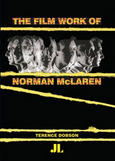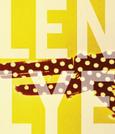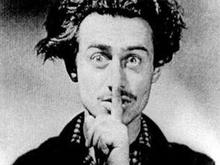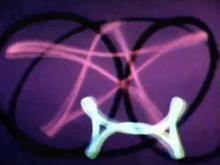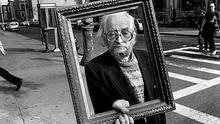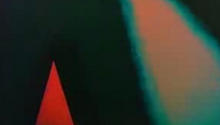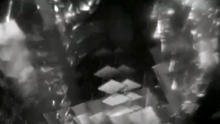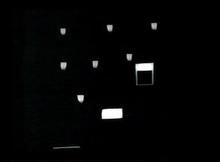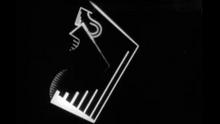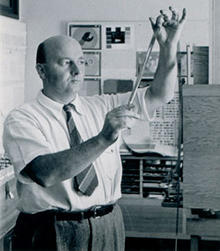Scratch Pad
(1960)by Hy Hirsh has a witty jazz expressionist personality different from his predecessors; it mixes graffiti on film stock and live-action. Hirsh's complex interface of imagery in his final four films create a radical and ironic world view.
The brilliance of Hy Hirsh's films often arises not so much from their technical originality as from their canny coupling of imagery with music that perfectly matches its mood.
Hirsh knew Norman McLaren and Len Lye before he scratched and painted directly on film, but his Scratch Pad (1960) has a witty jazz expressionist personality different from his predecessors. Lye had used the optical printer for synthesizing surreat clusters of imagery, but again Hirsh's complex interface of imagery in his final four films create a more radical and ironic world view (fireworks turning into an H-bomb blast, a cat watching football while walking backwards, autos racing through a woman's nude body, Chaplin pratfalls repeated in loops until they become menacing) that belongs more to the Post-Modern vision of Bruce Conner and Pat O'Neill than to the formalist/ modernist past.
Source: William Moritz "Hy Hirsh." in "Articulated Light: The Emergence of Abstract Film in America", Boston: Harvard Film Archive, 1995
Reading
Links
- Center for Visual Music's page of Hirsh photography
- "HY HIRSH | color photographs" by Dennis Reed © 2008 Paul M. Hertzmann, Inc. (PDF)
